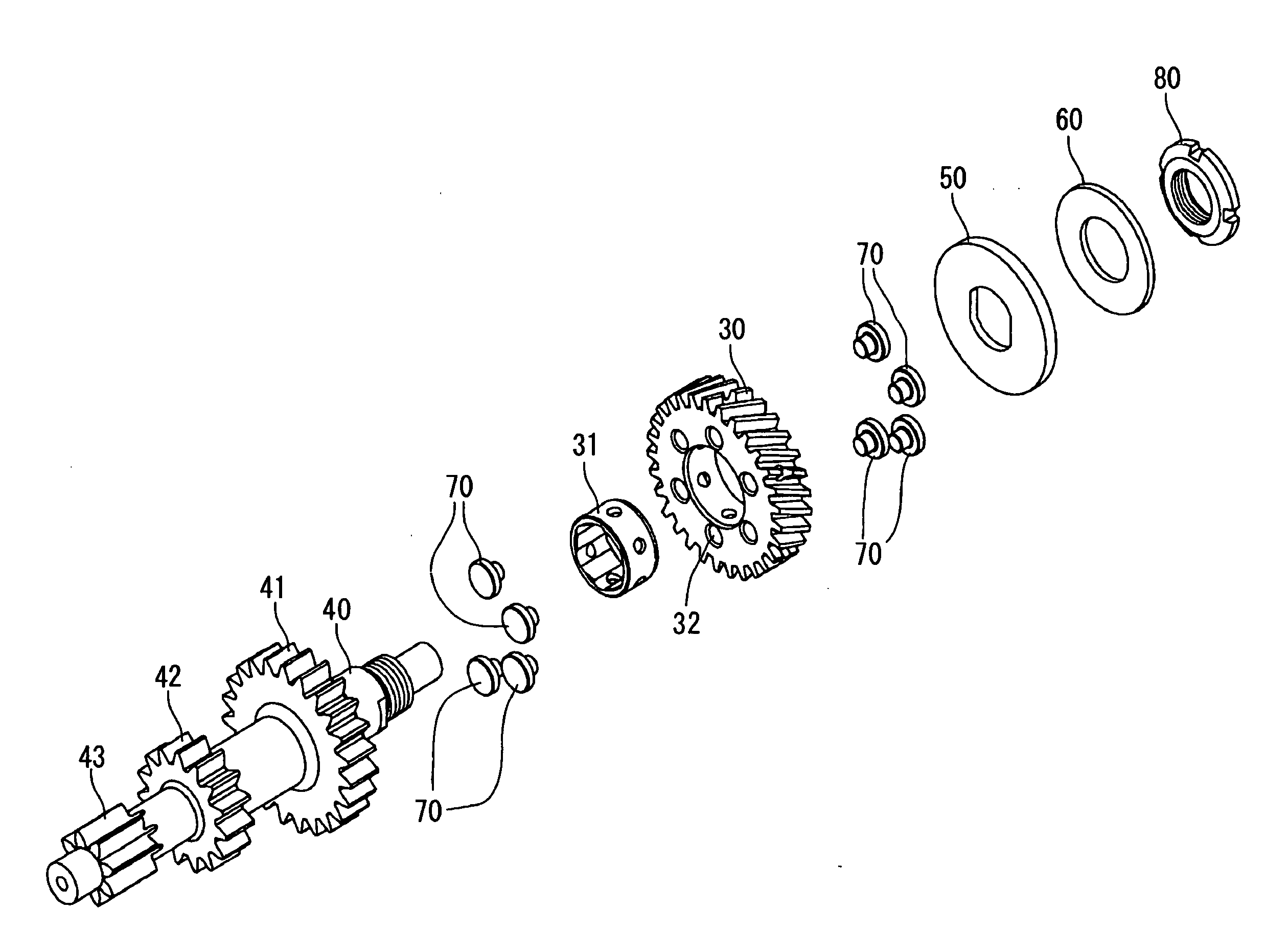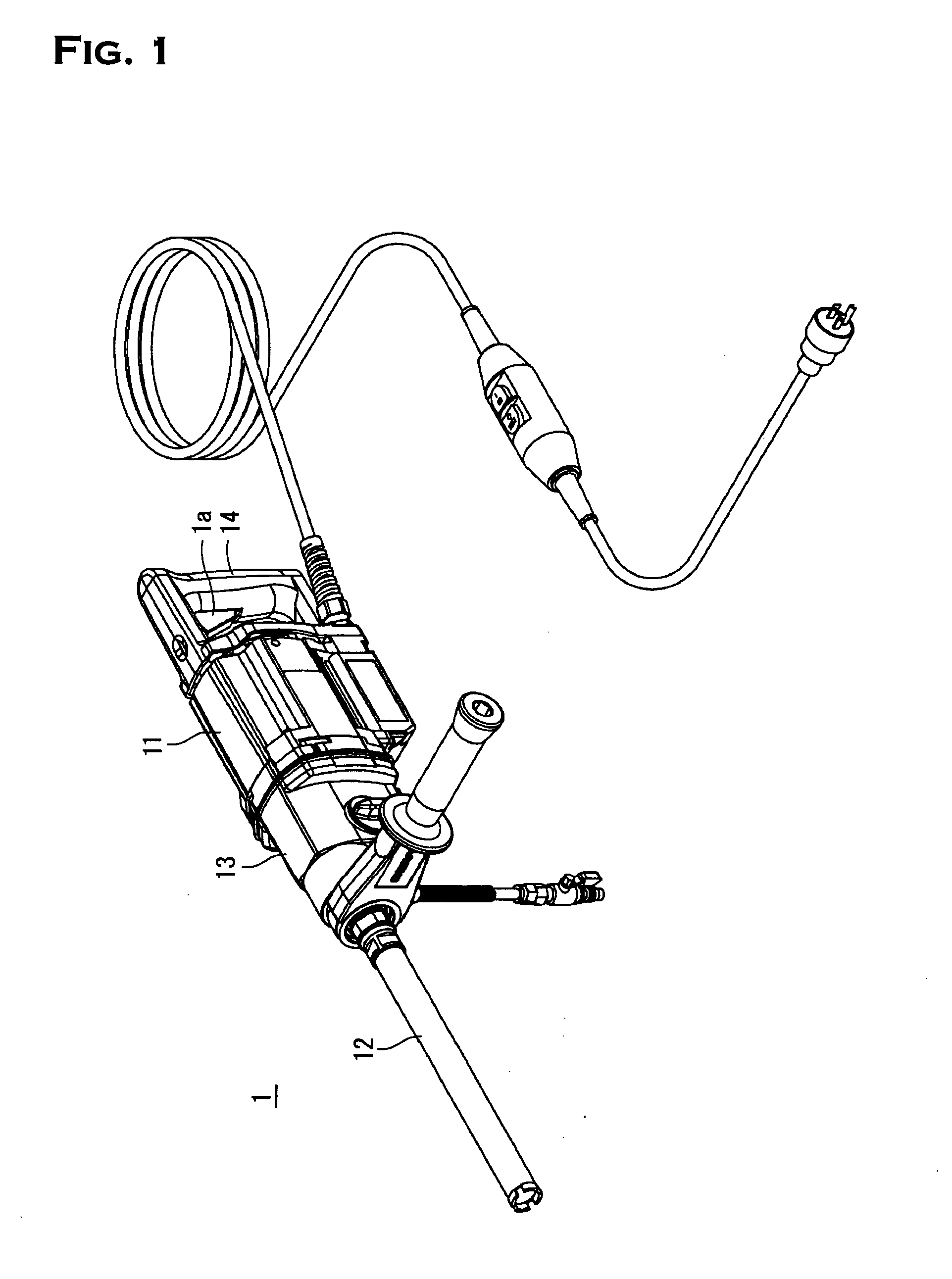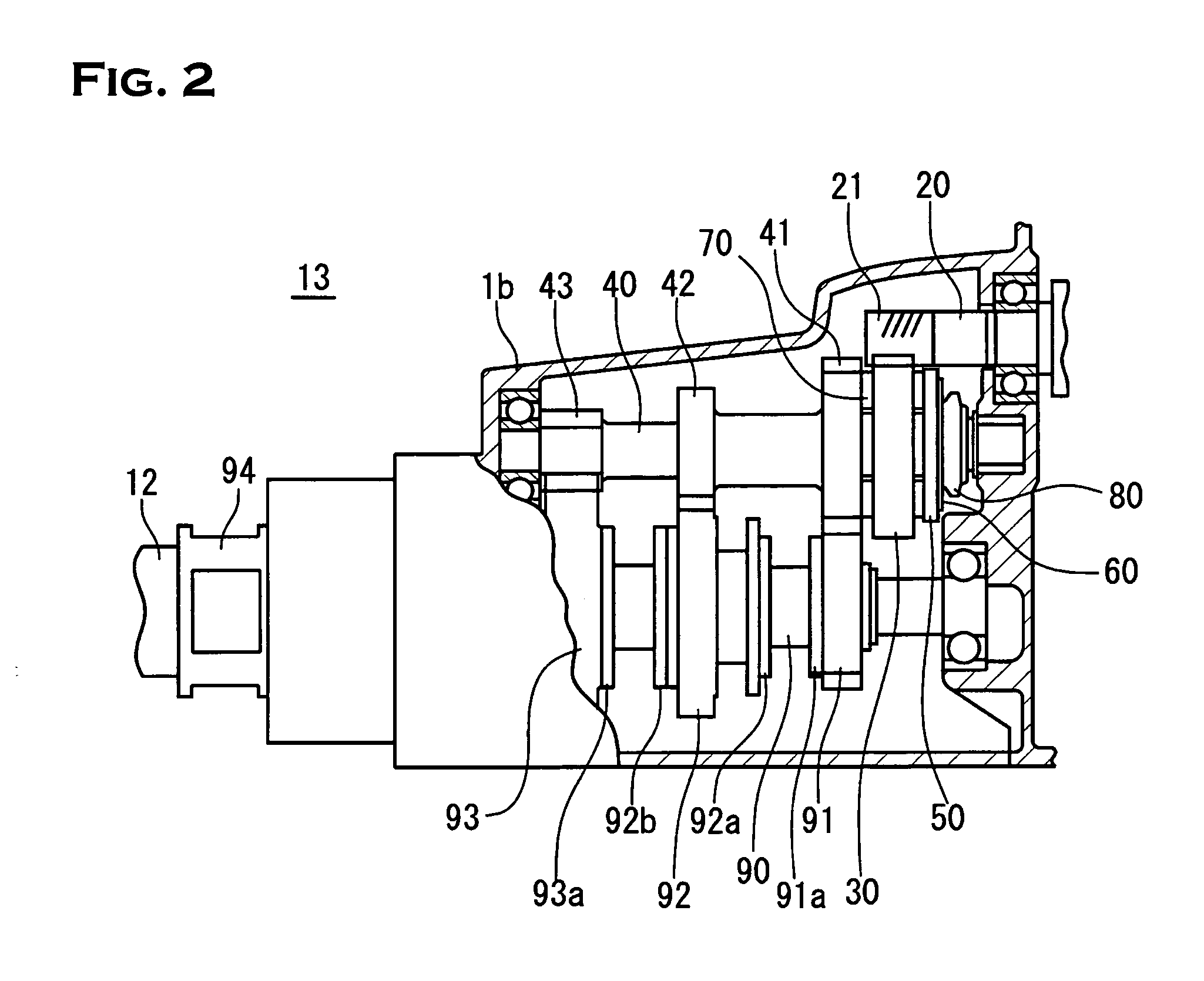[0007] When divided into two or more sections, the friction faces of the friction members will be formed with gaps through which
lubricant is facilitated to flow or by which lubricant is resupplied to the friction faces in a facilitated manner. Upon this division, material shavings generated during slip can be readily discharged together with lubricant. Further, such gaps facilitate
divergence of heat generated due to friction. Thus, improvement in resuppliability of lubricant, divergeability of heat, and dischargeability of material shavings will prevent the status of the friction faces under a slip condition from changing suddenly, thereby will further stabilize transmission torque under a slip condition and allow stable and long-hour transmission of torque. Stable torque contributes to good operationality of a power tool under a slip condition, and for instance an operation for stopping a power tool can be effected promptly, readily and credibly. As the friction members, an example can be given where radial or concentric grooves have been formed in a friction face of a toroidal friction member composed of a flat plate. When resuppliability of lubricant, divergeability of heat, and dischargeability of material shavings are taken into consideration, radially-grooved friction members are more preferable than concentrically-grooved ones.
[0008] Although it is conceivable that oiled friction faces of the friction members of the slip clutch will withstand longer-time slip operation, however the friction faces of the friction members are in
close contact with the counterparts, so that it is difficult to oil onto the friction faces even if the lubricant is of low
viscosity. For example in a hand-held power tool,
grease of high viscosity is often used from a viewpoint of maintenance-free operation, to lubricate periphery of the friction members. In such a case, oiling onto the friction members is more difficult than a case where lubricant of low viscosity is used. In this respect, the present invention will be more preferable for stabilizing transmission torque and improving durability of a hand-held power tool in which
grease is used for
lubrication, because the present invention does not oil onto the friction members but divides them into two or more sections to stabilize the transmission torque under a slip condition and thereby improve durability.
[0010] In view of the above study results, it is preferable if an installation structure of the friction members is such that the friction members should be installed into any of a gear or a rotator, which are in contact with the friction members, rather than the friction members should be held tightly at both sides thereof in a manner as has been conventionally done. Thus, such a structure in which the friction members has been installed into a gear or a rotator will provide single-sided friction faces allows the slip
initiation torque to be readily and accurately set up. When assemblability is taken into consideration, it is more preferable if the structure has the friction members installed in the gear.
[0012] Consequently, further studies revealed that it is more preferable if the friction member is comprised of two or more friction members, each of which is independently detachable with respect to the gear and has a friction face. This is ascribable to a fact that the friction face of the friction members according to the present invention is smaller than the counterpart of the conventional tabular toroidal friction members, whereby a friction face with higher face accuracy is readily obtainable. This is also ascribable to an assumption that if friction member pieces having uniform and excellent face accuracy only are selected and used out of a plurality of those independently provided as a friction member, the face accuracy could be improved comparatively readily. According to the present invention, a friction face with higher face accuracy is available, and local imposition of greater pressure is positively prevented. As a result, seizure will be prevented from occurring on a friction face, whereby durability of a power transmission device will be increased.
[0013] A conceivable structure in which each friction member piece should be installed in a gear is for instance that holes into which friction member pieces should be installed are formed in a side face of a gear and into which projections formed on each friction member piece should be inserted in a releasable manner. Such a structure will be advantageous if the number of holes formed in the side face of the gear is relatively large and the number of friction member pieces to be installed into the gear is adjusted to alter the area of the friction face, which is one of face conditions of the friction face. For instance, when the number of holes is six, in addition to a case where all the six holes are installed with friction member pieces, the area of the friction face can be adjusted if the friction member pieces are installed into two, three or four out of the six holes in a stepped manner. If the area of the friction face is successfully adjusted, then flexibility in setting up slip
initiation torque which is set up with mainly face conditions of a friction face and pressure will be increased, thereby setting up the set-up torque, i.e. slip
initiation torque to desirable torque will be facilitated. It should be noted maximum transmission torque is set up, for instance with rated torque of a motor equipped being taken into consideration.
[0015] As described above, the power transmission device for a core
drill according to the present invention allows predetermined torque to be transmitted in a stable manner under a slip condition of a slip clutch, whereby excelling in operationality of a power tool under a slip condition. Once operationality is established, the power tool can be stopped quickly, readily and reliably, for instance under a slip condition.
 Login to View More
Login to View More 


